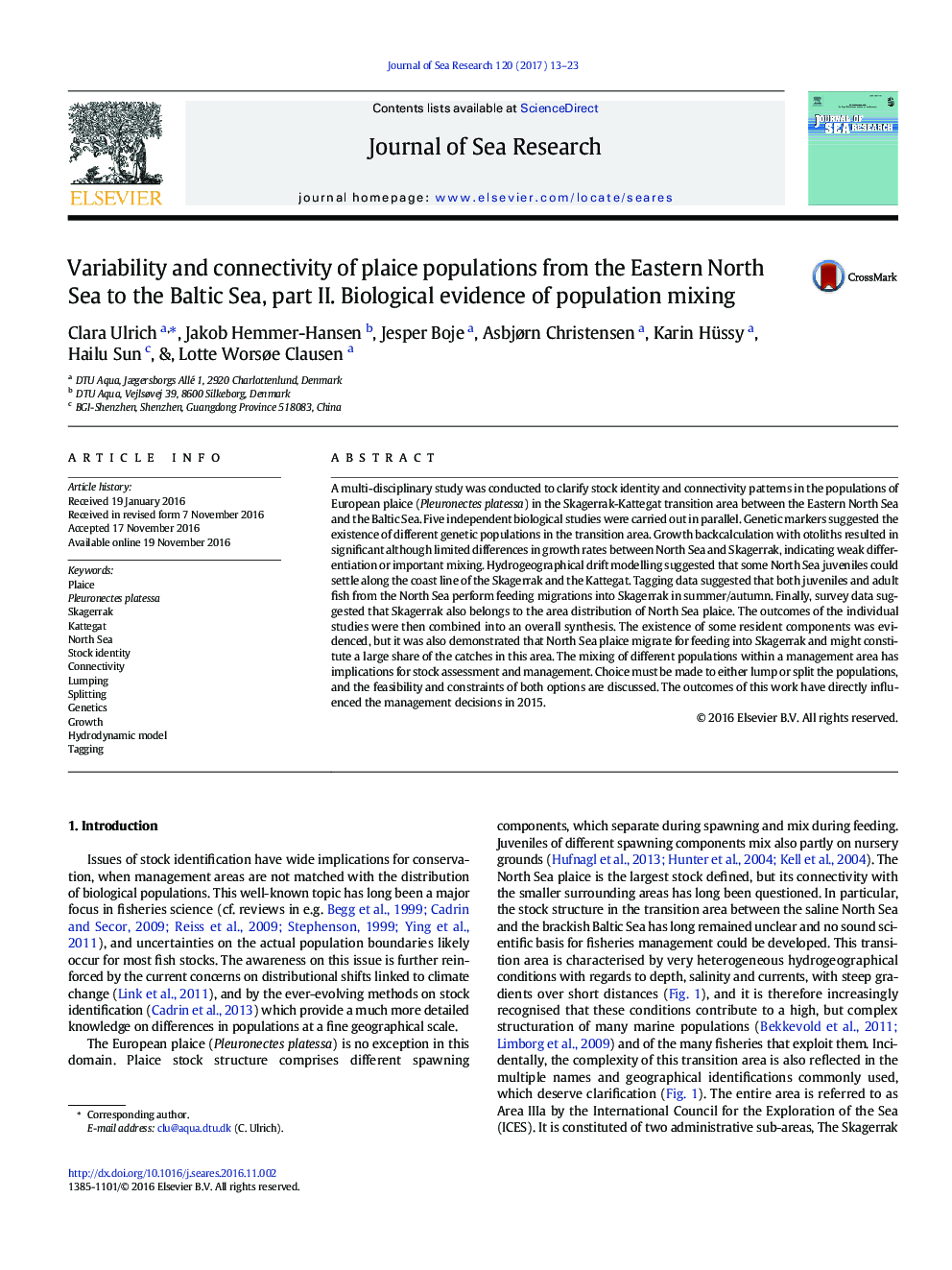| کد مقاله | کد نشریه | سال انتشار | مقاله انگلیسی | نسخه تمام متن |
|---|---|---|---|---|
| 5766077 | 1627455 | 2017 | 11 صفحه PDF | دانلود رایگان |
- New insights are gathered for the stock identity of plaice in the ICES area IIIa.
- Genetics, growth analyses, drift modelling, tagging and survey data are combined.
- Local populations exist in Skagerrak but North Sea plaice extends in there too.
- Stock assessment can be performed on the combined North Sea-Skagerrak area.
- The productivity of the local populations should be monitored.
A multi-disciplinary study was conducted to clarify stock identity and connectivity patterns in the populations of European plaice (Pleuronectes platessa) in the Skagerrak-Kattegat transition area between the Eastern North Sea and the Baltic Sea. Five independent biological studies were carried out in parallel. Genetic markers suggested the existence of different genetic populations in the transition area. Growth backcalculation with otoliths resulted in significant although limited differences in growth rates between North Sea and Skagerrak, indicating weak differentiation or important mixing. Hydrogeographical drift modelling suggested that some North Sea juveniles could settle along the coast line of the Skagerrak and the Kattegat. Tagging data suggested that both juveniles and adult fish from the North Sea perform feeding migrations into Skagerrak in summer/autumn. Finally, survey data suggested that Skagerrak also belongs to the area distribution of North Sea plaice. The outcomes of the individual studies were then combined into an overall synthesis. The existence of some resident components was evidenced, but it was also demonstrated that North Sea plaice migrate for feeding into Skagerrak and might constitute a large share of the catches in this area. The mixing of different populations within a management area has implications for stock assessment and management. Choice must be made to either lump or split the populations, and the feasibility and constraints of both options are discussed. The outcomes of this work have directly influenced the management decisions in 2015.
Journal: Journal of Sea Research - Volume 120, February 2017, Pages 13-23
